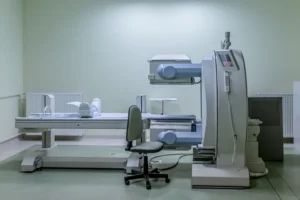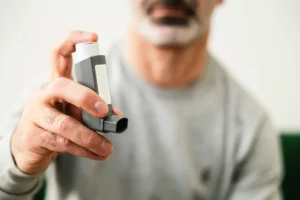The Silent Struggle: Sleep Apnoea Among Thin Individuals
- Updated on: Aug 27, 2024
- 3 min Read
- Published on Aug 5, 2023

Sleep apnoea is a sleep disorder characterized by cessation of breathing during sleep, leading to sleepless nights and impaired daytime activities. Sleep apnoea has traditionally been associated with obesity, but has largely been ignored in lean individuals. However, recent studies have revealed an increasing frequency of sleep apnoea diagnoses in this seemingly unlikely group.
The purpose of this article is to examine the unique challenges, underlying causes, and possible treatments that lean individuals face when diagnosed with sleep apnoea.
Relationship between slimness and sleep apnoea
Traditionally, sleep apnoea has been thought to be closely associated with obesity due to excess body weight and fat deposits in the throat and neck areas that can block airways during sleep. However, recent studies have shown that even thin people can develop sleep apnoea. Known as “slender man sleep apnoea,” this condition is characterized by unique challenges and physiological mechanisms.
Issues and symptoms
Lean people with sleep apnoea are often diagnosed late or misdiagnosed because of the misconception that this sleep disorder primarily affects obese people. Symptoms experienced by lean people with sleep apnoea may be similar to those experienced by obese people and may include loud snoring, shortness of breath during sleep, morning headaches, and excessive daytime sleepiness. there is.
Moreover, the negative effects of sleep apnoea on physical and mental health are not limited to weight alone. Lean people with sleep apnoea may experience mood swings, poor concentration, memory problems, and an increased risk of accidents due to daytime sleepiness.
Root cause
Obesity-induced sleep apnoea is usually associated with excess adipose tissue in the neck area, but the causes of sleep apnoea in lean people can be diverse and complex. A common factor is craniofacial abnormalities, and the structural anatomy of the face and throat may contribute to airway obstruction during sleep.
Additionally, in some thin people, the throat muscles relax excessively during sleep, which can lead to airway collapse. Hormonal imbalances, genetics, and lifestyle factors such as smoking and alcohol consumption may also contribute to the development of sleep apnoea in lean people.
Health Implications
Sleep apnoea poses significant health risks regardless of body weight. For thin people, these risks may be even more of a concern because symptoms may not be immediately linked to sleep apnoea, which can result in delayed diagnosis and treatment. Repeated breathlessness can lead to cardiovascular problems such as high blood pressure, heart disease, and stroke. In addition, untreated sleep apnoea can exacerbate existing health conditions and affect the overall quality of life.
Diagnosis and treatment
Treating obstructive sleep apnoea among thin people can be difficult because of preconceived notions about the association between sleep apnoea and obesity. Physicians should be aware of the symptoms and risk factors in this population.
Polysomnography, a sleep study that monitors various bodily functions during sleep, remains the gold standard for diagnosing sleep apnoea. Home sleep apnoea testing is also popular as an initial screening, but it is best done under the supervision of a doctor because it does not capture all aspects of the condition.
The treatment of lean patients with sleep apnoea is similar to the treatment of obese patients. CPAP (continuous positive airway pressure) therapy is a commonly prescribed treatment that involves wearing a mask attached to a machine that provides a constant flow of air to keep the airways open during sleep. is. Other options include lifestyle changes, dental assistance, and sometimes surgery to correct structural abnormalities.
Lifestyle Changes
Regardless of your weight, lifestyle changes can significantly improve sleep apnoea symptoms. These changes include maintaining a regular sleep schedule, avoiding alcohol and sedatives before bed, quitting smoking, and regular physical activity.
Conclusion
Sleep apnoea is a serious sleep disorder that affects people of all body types, including thin people. Recognizing symptoms, understanding the underlying causes, and facilitating timely diagnosis and treatment are essential to improving the overall health and well-being of people living with this disease. By raising awareness of sleep apnoea in skinny people, we can ensure that this silent battle goes unnoticed and that everyone can rest easy and get restful sleep.












